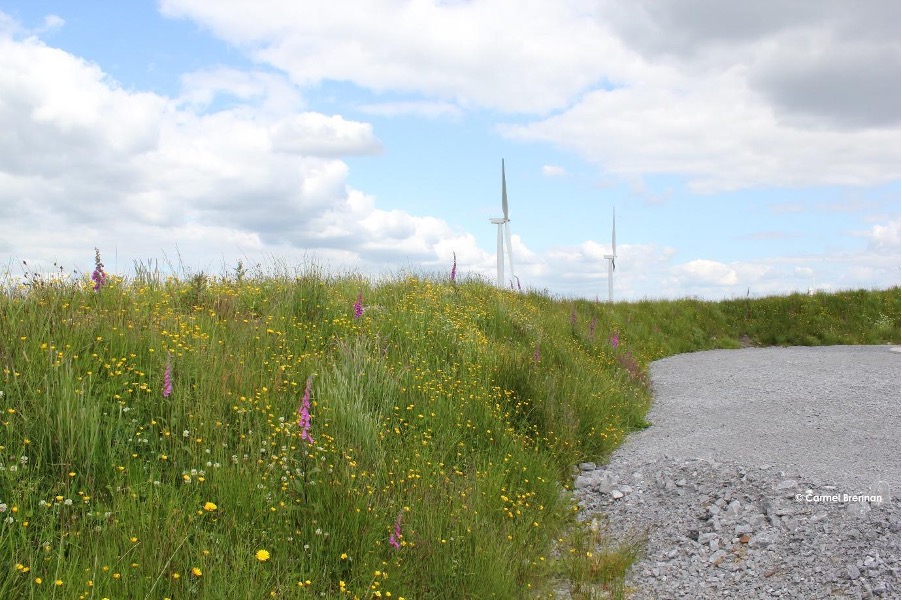
Nature+ Energy: Latest Developments
Aoife Kieran from the Nature+Energy project gives us an update on recent developments.
The third year of the Nature+Energy project was busy and productive, with work progressing on all work packages of the project. One of our biggest achievements in the past year has been the development of a methodology for natural capital accounting on the scale of a windfarm. This is based off system of environmental economic environmental accounting system, and completely focuses on measuring biodiversity. After completing field surveys of many exemplar windfarm sites in the summer of 2022, the baseline natural capital accounts were completed and finalised earlier this year. This includes extent and condition accounts of habitats across each site and provides a methodology for tracking changes in biodiversity on the sites based on a set of indictors e.g., hedgerow cover, vegetation structure, pollution impact potential. A series of risk registrars were also developed, mostly based off observations made in the field, which inform wind farms of the risks to biodiversity for each habitat type. We have also begun developing an online platform to automate the natural capital accounting process, which will ensure it is straightforward to carry out.

We have also been working on developing a smart environmental monitoring system – a machine which can be placed in the field to monitor environmental conditions remotely. This has involved the continued development of a computer program for bird identification. Vast amounts of data for bird and bat calls have been collected since the beginning of the project, which are being used to train a machine learning model. In addition, we have started developing a radar-based insect detection tool. This has had promising results in the lab, identifying bees to species (based on the patterns of vibrations as they fly, which is detected by the radar). The next step is to take this into the field and test it there.
The development of biodiversity action. plans for the wind farm sites has begun with the collection of potential actions to increase biodiversity. These will then be presented to the project partners with a priority threat management approach. This is a novel application of this approach, combined with using information from the natural capital accounts. This will feed into site specific biodiversity action plans.
We have also begun work on the Biodiversity Park work package. In February we met with local stakeholders and county council to discuss this, and progress is being made on the development of national guidelines for wind farm biodiversity parks.
We have published several papers in the last year; in January, we published a review of the potential impacts of climate change mitigation measures on biodiversity. This included looking at a range of energy production infrastructure and analysing their impacts on biodiversity and ecosystems. We found that onshore windfarms have a high potential for mitigation of both biodiversity and climate crises. We also published a paper for an open-source data annotation tool, which was built as part of the smart environmental monitoring system. Our paper showing that national economic recovery from financial shocks is accelerated in countries powered by renewable energy has received considerable news attention nationally and throughout the world.
We held our final steering committee meeting in March. Engaging with our project partners and steering committee, we discussed our priorities as we enter the final year of the project.
In conclusion, Nature+Energy has made considerable progress in developing our methodologies for environmental accounting and biodiversity monitoring. Our focus on practical solutions and collaboration with partners has enabled us to develop robust frameworks and deploy innovative technologies. We look forward to the final year of the project and seeing the outputs come together.

NATURE+ENERGY
The Nature+Energy project is founded on the idea that wind farms have the potential to provide so much more than renewable energy.
View


